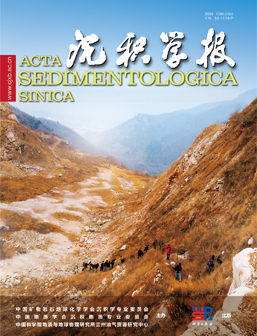Sedimentary characteristics and quantification of a distributive fluvial system: A case study of the Jurassic Shaximiao Formation in the Northwest Sichuan Basin
doi: 10.14027/j.issn.1000-0550.2025.049
- Received Date: 2024-10-25
- Available Online: 2025-10-22
-
Key words:
- Sichuan Basin /
- Shaximiao Formation /
- distributive fluvial system /
- sedimentary model /
- quantification /
- hydrocarbon exploration
Abstract: In order to break through the bottleneck of high cost of oil and gas exploration due to the difficulty of accurate prediction of sedimentary system, the study is based on the theory of distributive fluvial system, and takes the Jurassic Shaximiao Formation in Northwest Sichuan Basin as the sample, synthesizes the data of field outcrops, cores, and logging-recording wells, etc., and utilizes the research methods combining the analysis of the ground surface and the subsurface, and the analysis of the quantitative and qualitative analyses, so as to achieve the quantitative characterization of the sedimentary system of the Shaximiao Formation in the Northwest Sichuan Basin. The results of the study showed that: (1) The Shaximiao Formation in the central and northwest Sichuan basin has developed three types of sedimentary systems: distributive fluvial system, delta system, and lacustrine system. The distributive fluvial system of Shaximiao Formation in the study area can be divided into 3 subfacies and 6 microfacies types, the delta system can be divided into 2 subfacies and 4 microfacies types, and the lacustrine system can be further divided into shore-shallow lake beach-bar deposits. (2) The ratio of subfacies net-to-gross ratio is 50%-70% in the proximal, and the sand bodies are superimposed with thick layers. The medial subfacies net-to-gross ratio is between 30%-50%, and the sand body is distributed in thick layers. The distal subfacies net-to-gross ratio is 20%-30%, and the sand body is isolated. The delta and lacustrine facies systems are distributed in the middle Sichuan basin, and the net-to-gross ratio change is generally less than 15%. The sand bodies are also distributed in continuous sheets, but the maximum thickness of single sand bodies is thinner than that of the medial facies belt. (3) The Shaximiao Formation in the study area is mainly influenced by fluvial action, with the Sha 1 Member showing the distributive fluvial system terminating in a larger range of lacustrine deposits, and the Sha 2 Member showing the distributive fluvial system terminating in some small temporary lakes. (4) According to the modern sedimentary reference, in addition to the development of large high-quality reservoirs in the delta system, the medial and distal facies of the distributive fluvial system can also form continuous channel sand reservoirs. The results of the research are of great significance in characterizing the development scale and overlay style of different sand bodies, and also provide a reference basis for the study of the distribution of sedimentary systems in the context of similar fluvial deposits.
| Citation: | Sedimentary characteristics and quantification of a distributive fluvial system: A case study of the Jurassic Shaximiao Formation in the Northwest Sichuan Basin[J]. Acta Sedimentologica Sinica. doi: 10.14027/j.issn.1000-0550.2025.049 |






 DownLoad:
DownLoad: